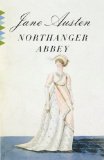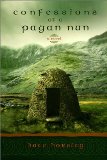I never outgrew a fondness for being read to, and if you didn’t either, you might want to check out this site, which features videos of Neil Gaiman reading his new novel The Graveyard Book in its entirety. You can browse inside the book at Harper Collins’s site, and you can check out an NPR story about Neil and Neil’s blog. Neil is one of the most accessible authors, and really seems to care about his fans. What more perfect book for Halloween than a tale of a boy raised by ghosts in a graveyard?
What are your favorite Halloween books? Are you participating in the RIP Challenge this year? I couldn’t because I didn’t feel I should commit to a reading challenge with grad school taking up extra time. I really wanted to do the challenge this year, when the chill in the air is the perfect accompaniment to a gothic novel. I also really enjoyed my selections from last year, though I still haven’t finished Jonathan Strange and Mr. Norrell. I honestly did enjoy what I read, and I do want to finish it, but I found it was a challenging and very long book, and perhaps would be best to read when I feel I have time.





